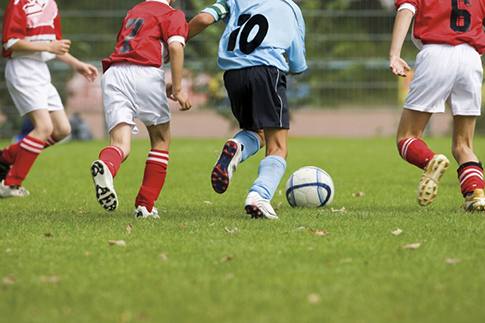The Centers for Disease Control and Prevention has released a lengthy guide for youth sports to incorporate physical distancing and infection control to prevent the spread of COVID-19. The wide-ranging recommendations include advice such as avoiding carpools to sporting events and players refraining from celebratory high-fives.
“There’s always tradeoffs when you follow these recommendations and I think it definitely changes the way that children play sports,” says Annabelle de St. Maurice, MD, MPH, co-chief infection prevention officer for UCLA Health. “However, going forward, seeing as we’re continuing to see an increase in the number of cases, these measures may be recommended for a long time.”
The California Department of Public Health has not yet authorized the return of recreational team sports for kids.
Dr. de St. Maurice, who also serves on the Pac-12’s COVID-19 Medical Advisory Committee, said the decision to resume youth sports can be based on factors ranging from chronic conditions to maturity.
“Families really should consider the risks and benefits of their child participating, and certainly there are benefits from participation in sports,” she says. “It promotes important things like mental health and physical well-being.”
Parents should weigh any health conditions for their children or members of the household that would put them at greater risk of developing a serious illness, Dr. de St. Maurice says. Those include diabetes, chronic heart or lung disease and obesity.
Age is also a consideration. “Certainly older kids might be better able to follow these rules and follow directions, whereas younger children might need a little more guidance to follow and more support.”
While children generally have lower rates of COVID-19, some sports better lend themselves to physical distancing and less contact with other people. Outdoor sports are probably safer than those played indoors.
The CDC says shared objects, such as balls or gymnastics equipment, should be cleaned after use by each participant, if possible.
“It’s easier in some sports as opposed to others,” Dr. de St. Maurice says. “Basketball, obviously, you can’t clean it every time you pass the ball. In baseball, you could disinfect bats in between players. That’s one of the challenges with sports and that’s why some sports may be higher risk and some sports may be lower risk.”
Individual sports, such as swimming and running, would be considered low-risk, Dr. de St. Maurice says.
Another big change for youth sports is the recommendation to eliminate non-essential volunteers and spectators. The CDC also says face coverings should be worn by coaches, officials, parents and spectators as much as possible.
Travel teams should consider only competing against local teams, Dr. de St. Maurice says.
“If you’re in an area with high risk and going into an area with low risk, that could potentially introduce the virus into areas that are recovering,” she says. “The opposite is true, too, if you go from a low-risk area to a high-risk area and introduce the virus to your community.”
For youth who do play, she said the habits they develop on their teams could help them for the upcoming school year, such as staying home even with only mild symptoms of illness, cleaning hands properly and disinfecting shared objects.
“I think some of the key points are looking at behaviors that reduce spread. These are behaviors children can learn while they’re playing sports, but also if we have in-person school in the fall,” she says.
The CDC has a list of frequently asked questions about youth sports that could be of help for parents.
College Ball
Plans for college sports are still being worked out, as schools across the U.S. have reported positive cases among football players arriving to training camp.
Dr. de St. Maurice said the Pac-12 task force is looking at how to minimize the risk for athletes, if there’s a season for fall sports including soccer, volleyball and football.
“We’re looking at risk of different sports, an algorithm for testing, contact tracing, isolation, as well as infection control practices to address the risks,” she says. “We want to make sure that people who have symptoms are excluded from playing so they don’t spread disease to others.”
The status for fans is also up in the air, although Dr. de St. Maurice is not optimistic.
“The more people you have present and the closer those people are to each other, the more the risk of transmission increases,” she says.
Recreational Play
For adults looking for recreation, Dr. de St. Maurice says to follow their county’s guidance and to avoid playing with groups outside the home. For instance, Los Angeles County has reopened golf courses and tennis courts but not beach volleyball courts.
“I think kicking around a soccer ball with members of your household or throwing a baseball is low risk,” she says.
Original post https://alertarticles.info



